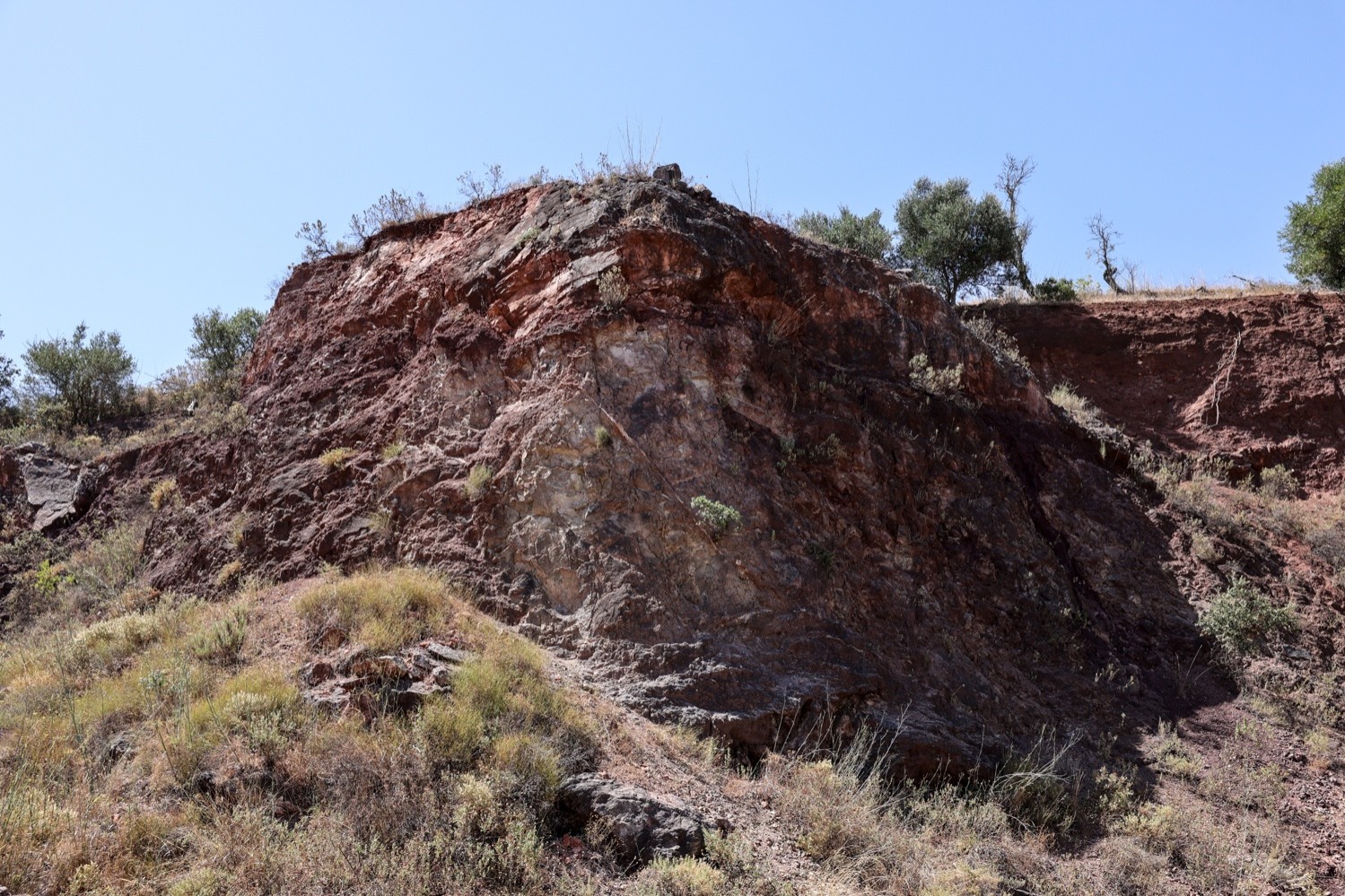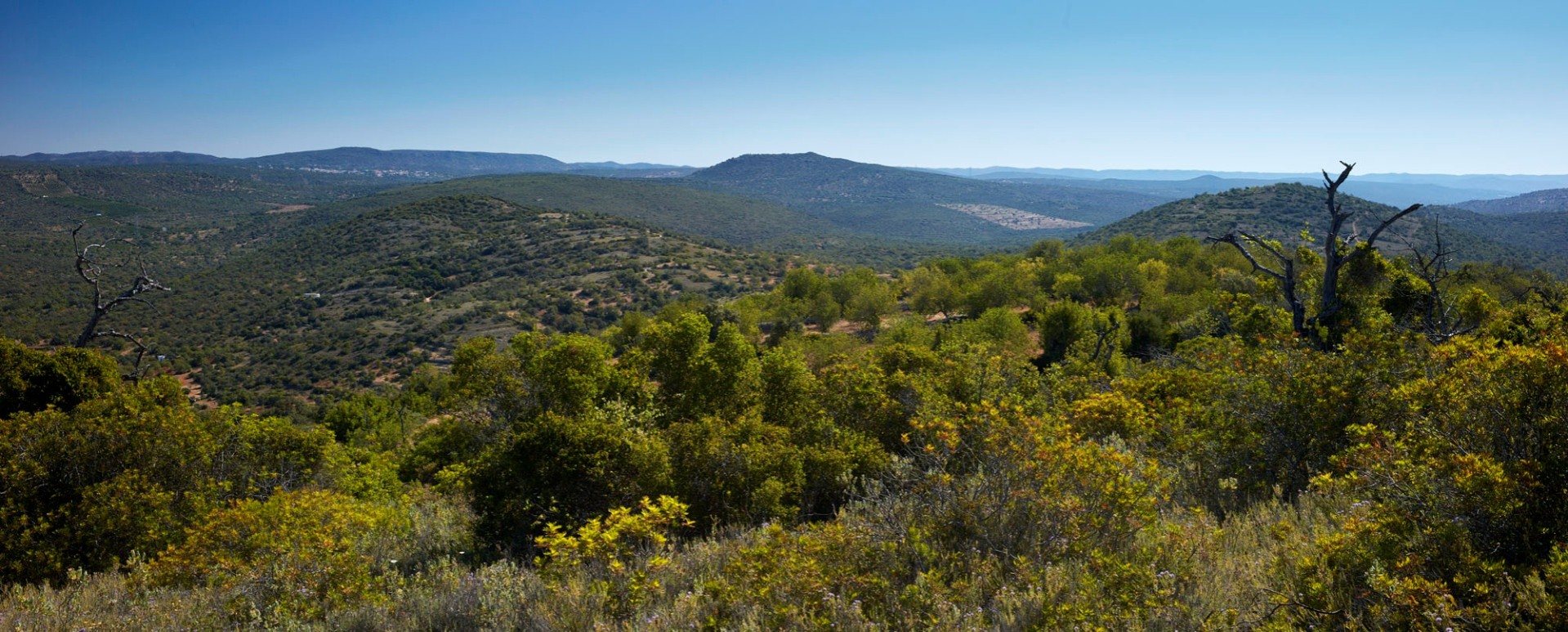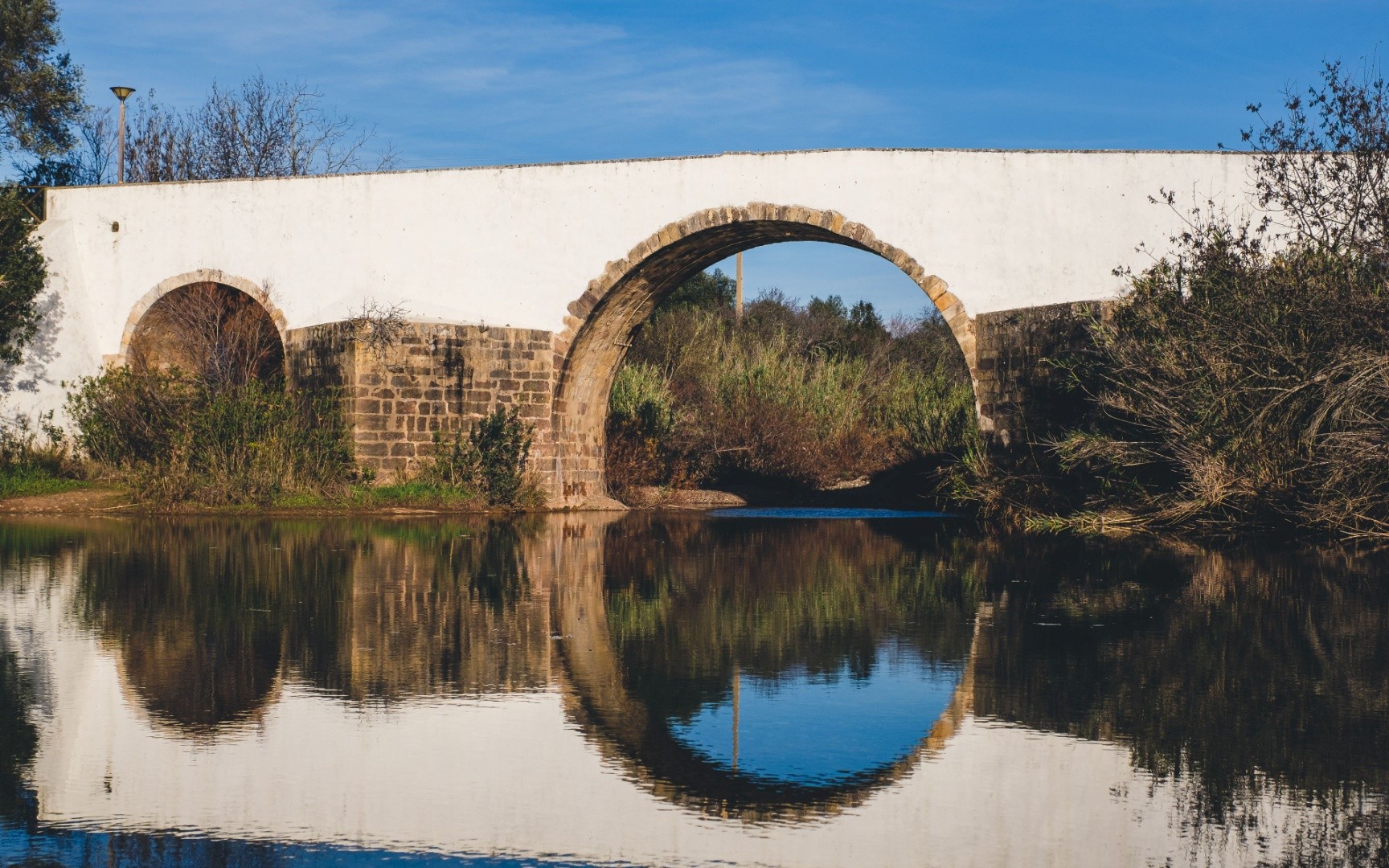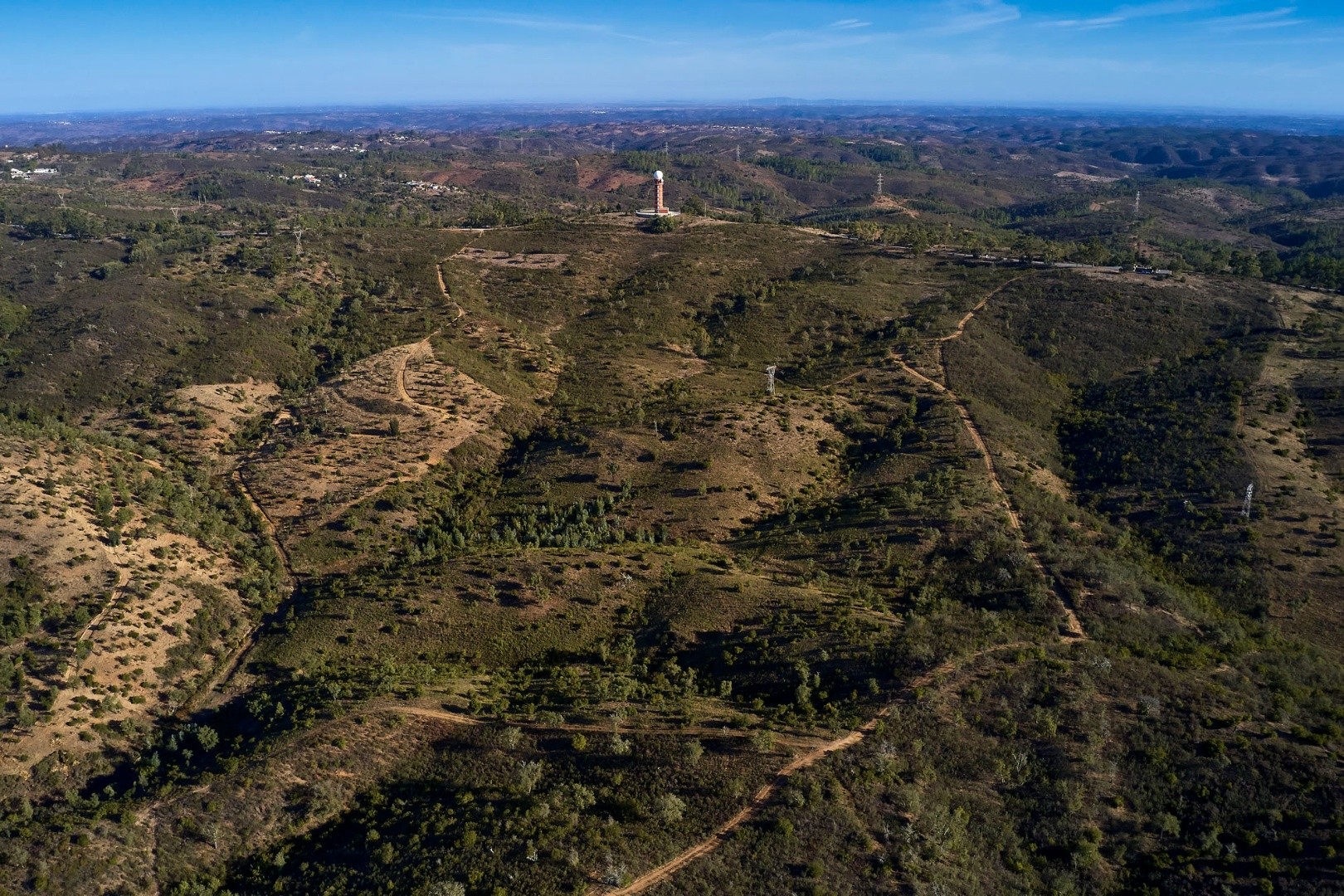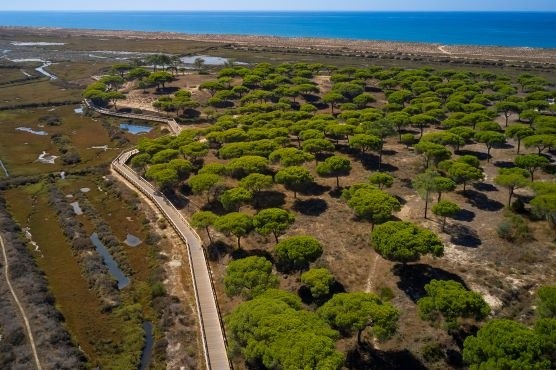Coastal Dynamics
At the western end of the barrier islands of the Ria Formosa, one can discover the fossil cliff of Ancão. These ancient coastal cliffs have a direction parallel to the current coastline and are protected from coastal erosion by the barrier island of the Ancão peninsula, which marks the beginning of the Ria Formosa at this location. Protection against coastal erosion has therefore been achieved through the formation of the barrier island system of the Ria Formosa, a process that began approximately 6,000 years ago.
The fossil cliff of Ancão is identified as having two units, both composed of Pleistocene sandstones and conglomerates. One unit at the base of the cliff, the Ludo Sands, comprises white sandstones of coarse to medium grain, exhibiting cross-bedding. The Ludo Sands are erosive over the Quarteira Sands of the Upper Pliocene – Lower Pleistocene and are deposits filling intertwined river channels, considered to be of Lower Pleistocene age. The presence of pulmonate gastropods in the Ludo Sands confirms their depositional setting in a continental region. The deposition of this continental unit is associated with a drop in sea level during a glacial cycle of the Lower Pleistocene, but precise dating is lacking.
The upper unit at the top of the cliff, the Gambelas Sands and Conglomerates of the Upper Pleistocene, consists of silts with pedogenic structures (related to soil formation), very coarse red sandstones, and rolled pebbles exhibiting channel features and cross-bedding. These characteristics indicate deposits that filled channels and bars within channels, which migrated in intertwined watercourses. These intertwined watercourses would have exhibited intermittent flows typical of ephemeral rivers characteristic of arid climates. The clasts of the conglomerates are composed of quartz, greywacke, and shale, indicating a sedimentary provenance from the flysch formations of the Upper Carboniferous of the Serra Algarvia (Serra do Caldeirão). This also suggests a contemporary tectonic uplift of this geological and geomorphological unit of the Algarve, alongside the deposition of the Gambelas Sands and Conglomerates.
The alteration in the pattern of fluvial deposition observed in the clastic units exposed in the fossil cliff of Ancão indicates a transition from a humid climate, predominant in the Lower Pleistocene (Ludo Sands), to a dominant arid climate in the Upper Pleistocene (Gambelas Sands and Conglomerates).
Locality: Ancão




